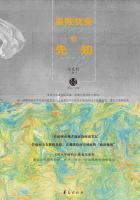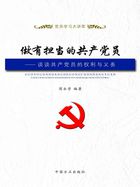Using the concept of“beyond balance of power”this book analyzes U.S.security strategy towards South Asia in the post‐Cold War era.During the Cold War,the U.S.‐Pakistan alliance was counter weighted by the friendly relationship between the Soviet Union and India.These two opposing forces formed the balance of power in South Asia.America viewed South Asia as a“reduction”of the global Cold War,and the conflict between India and Pakistan was but the“South Asian version”of the worldwide conflict between the United States and the Soviet Union.the U.S.South Asia policy served its global containment strategy.Pulling Pakistan into an alliance,supporting India to counter China,and aiding Pakistan to contain the Soviet Union were all part of America's global strategy and in its national interest.
After the Cold War ended,America started using bilateral,regional,and functional lenses to understand the South Asian sub‐continent,and started to utilize a“beyond balance of power”strategy in its interactions with the region.The strategy can be seen in three areas:ideology,policy,and bilateral relationships.As for ideology,America believes that,whether on the basis of economic potential,political worthiness,or comprehensive national power and regional influence,India's strategic position is obviously higher than Pakistan's.
On a policy level,the foci of the Clinton administration's global strategy and the main goals of its South Asia policy were economy,security and democracy.Because of the major security issues in the South Asian region(such as nuclear proliferation,the Kashmir conflict and terrorism),America's principal security interests there consisted of maintaining regional stability,preventing the spread of weapons of mass destruction,and countering terrorism.Non‐proliferation policy,Kashmir policy,and anti‐terrorism policy thus comprised the bulk of America's South Asia security policy and produced a tilt toward India.In the area of bilateral relationship,not only do U.S.‐India and U.S.Pakistan relations occupy different positions in America's South Asia security strategy,but America has also tried to establish these two bilateral relationships on different cooperative bases and has attempted to treat each separately.
The occurrence of the September 11th attacks followed by the so‐called“global war on terror”had a great impact on the South Asia region.On the one hand,America has actively reestablished and developed a partnership with Pakistan to obtain this front‐line country's support.At the same time,it has continually pushed to transform its strategic relationship with India.America maintains and develops friendly relations with both India and Pakistan at the same time,demonstrating continued interest in—and implementation of—a“beyond balance of power”strategy.
The book is divided into three parts:introduction,text,and conclusion.The introduction provides an overview of the study,including methodology,a basic conceptual analysis and brief survey of South Asian studies in the United States.The body text consists of six chapters.The first chapter introduces four stages in the evolution of the U.S.security strategy toward South Asia in the Cold War era,and the basic characteristic of South Asian security,namely a balance of power between the U.S.‐Pakistan alliance and a close Soviet Union‐India relationship.In the second chapter,the book chiefly explains America's main interests and goals in South Asia by way of an analysis of a few nationals trategy reports of the Clinton administration,and introduces American scholar's different understandings of India and Pakistan.
The third chapter briefly analyzes the challenges to the U.S.nonproliferation policy brought by the Indian and Pakistani nuclear tests,and the change in the U.S.proliferation policy toward India and Pakistan on account of the nuclear tests.In the fourth chapter,the book seeks to observe the substance and characteristics of the U.S.policy toward the Kashmir issue after describing the process of the Kargil conflict and the U.S.response to it.
The fifth chapter focuses on the adjustment of the U.S.‐Indian and U.S.‐Pakistani relations in the wake of Bill Clinton's visit to South Asia,which foreshadowed a tilt toward India and an estrangement from Pakistan.By reviewing the transforming U.S. India strategic partnership and Pakistan evolving from“front line state”to“major non‐NATO ally”after the September 11th attacks,the sixth chapter emphasizes the U.S.interests and goals as well as new challenges in South Asia.And,as the last part of the book,the conclusion briefly explores the implications of the U.S.South Asian security strategy for China's security environment,and the concept of“beyond balance of power”for Chinese foreign policy,through the lens of the U.S.factor in China‐South Asia relations and the Si no U.S.India strategic triangle in the making.















